National Museum of Nature and Science
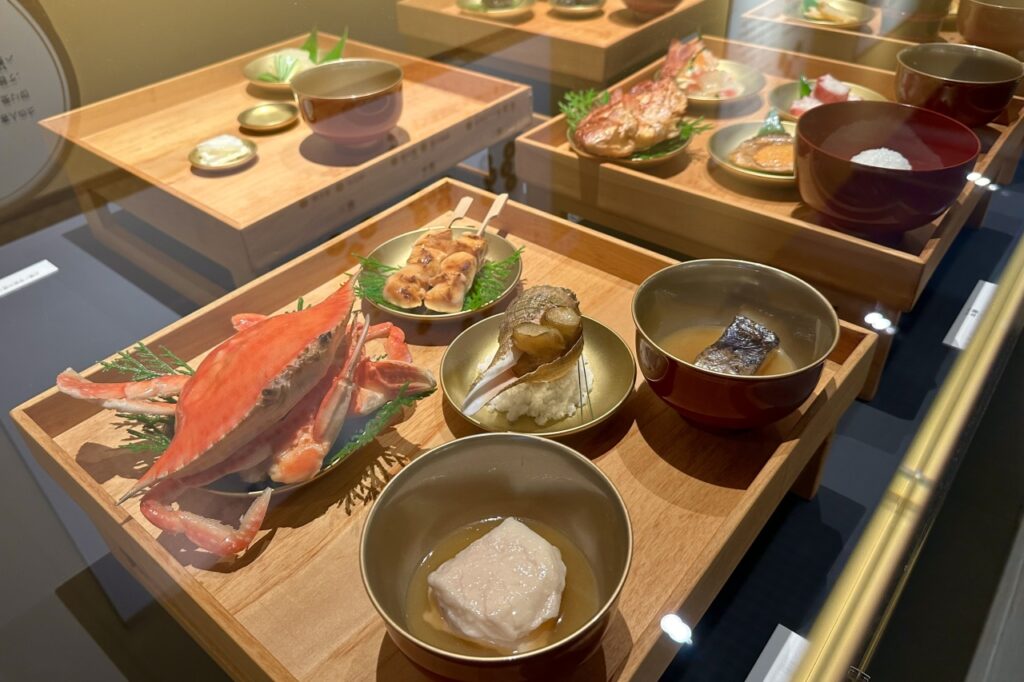
Since being registered as a UNESCO Intangible Cultural Heritage in 2013, Japanese cuisine has been attracting more and more attention worldwide.
Its charm, which many Japanese people seem to know but surprisingly don't know about, can be explained from a variety of perspectives, such as the diverse ingredients nurtured by the nature of the Japanese archipelago, techniques such as fermentation created by people's wisdom and ingenuity, cooking methods, and historical changes. A special exhibition "Japanese Cuisine – Japanese Nature and People's Wisdom" is currently being held at the National Museum of Nature and Science (Ueno, Tokyo). The exhibition period is until February 25, 2024 (Sunday).
Since I covered this exhibition, I will report on the situation at the venue.
*This exhibition was scheduled to be held in 2020, but was canceled due to the influence of the new coronavirus and will be held again.


Food from the mountains, food from the sea. Japanese food culture nurtured by diverse ingredients
The exhibition consists of six chapters.
The first chapter is an introduction that uses a video to ask the question, "What is Japanese food?" Next, the second chapter, “Ingredients grown in the archipelago,'' will be displayed, occupying approximately half of the venue.
Starting with water, which is the basis of food, we then move on to mushrooms, wild plants, vegetables, seaweed, seafood… The rich ingredients brought to you by the Japanese archipelago, which stretches more than 3,000 km from north to south and has one of the world's greatest biodiversity, will be presented scientifically using over 250 actual specimens and models, while also discussing topics such as fermentation techniques and soup stock. is explained.
For example, in the water exhibition area, space is devoted to explaining the hardness of water, such as soft water and hard water.
The hardness of water changes depending on the type of geology and how long rainwater, which is the source of daily water (hardness itself is almost zero), lingers, and minerals such as calcium and magnesium are present in 1 liter of water. It depends on how many mg it contains.
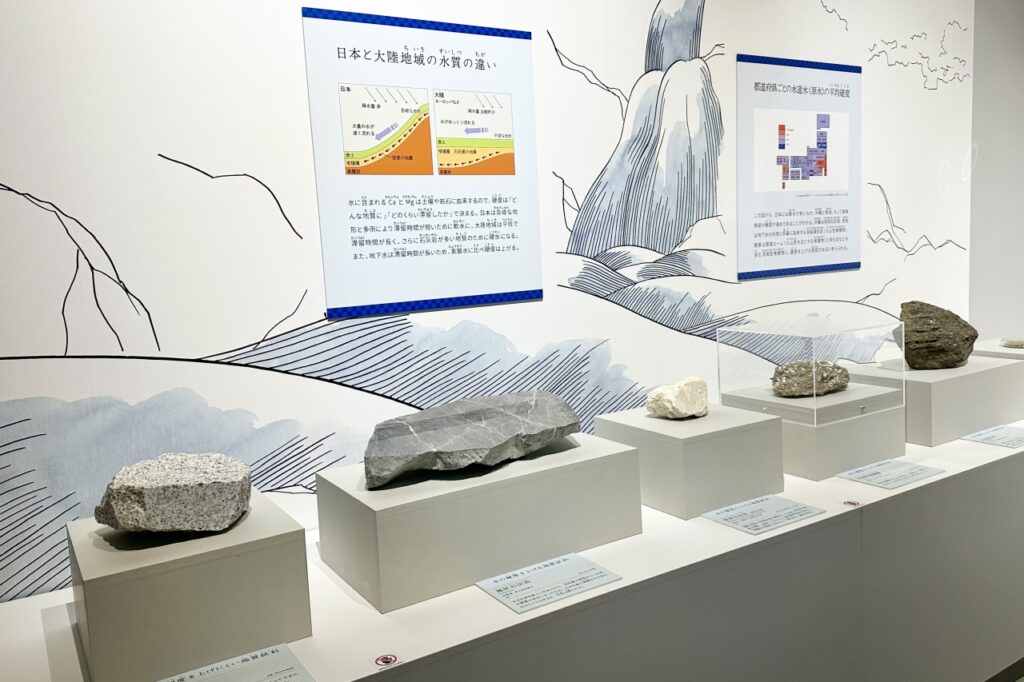
According to WHO standards, less than 60 ml/L is soft water, 120 ml/L or more is hard water, and anything in between is medium hard water. Water in Japan is basically soft water due to its steep terrain, high rainfall, and short water retention time. Soft water has no taste and ingredients dissolve easily in the water, making it suitable for Japanese cuisine that uses dashi stock to bring out the flavor of the ingredients.
On the other hand, continental Europe has a flat topography and slow flow, so there is a lot of hard water, and hard water makes it difficult for ingredients to dissolve and break down when boiled, so stews and other stews using meat have become widely established as home cooking. Ta.
I often hear people say, “Japan is a country with soft water, so if you travel to a country with hard water, some people find it hard to drink water or get upset stomachs.'' Some people may not know that the ease of use also varies depending on the water quality. It turns out that soft water greatly contributed to the development of Japan's food culture.
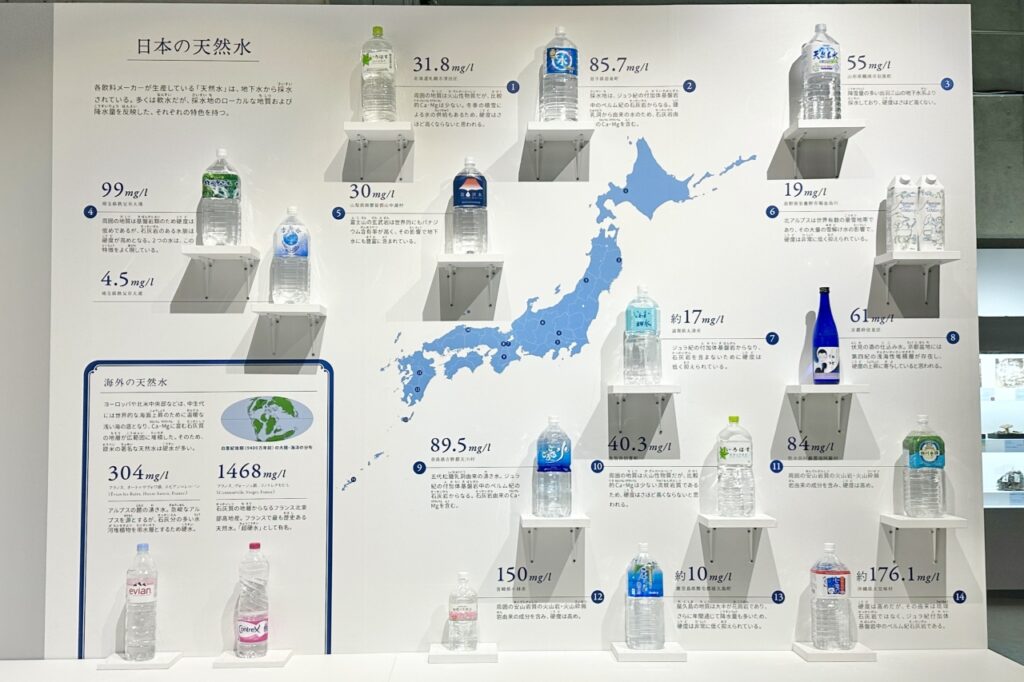
Although it is said that Japan is a country with soft water, there are significant regional differences, and there are some places with hard water. The exhibit displayed plastic bottles of natural water of various hardnesses sold from all over Japan, and explained and compared the topography and geology from which the water can be harvested.
Furthermore, Japan's varied topography and climate, including lowlands, highlands, subtropics, and cool-temperate zones, contribute to the diversity of vegetation, especially mushrooms. Of the approximately 20,000 species of mushrooms known around the world, it is said that around 2,500 to 3,000 species, about 10% of which have names, are distributed in Japan.
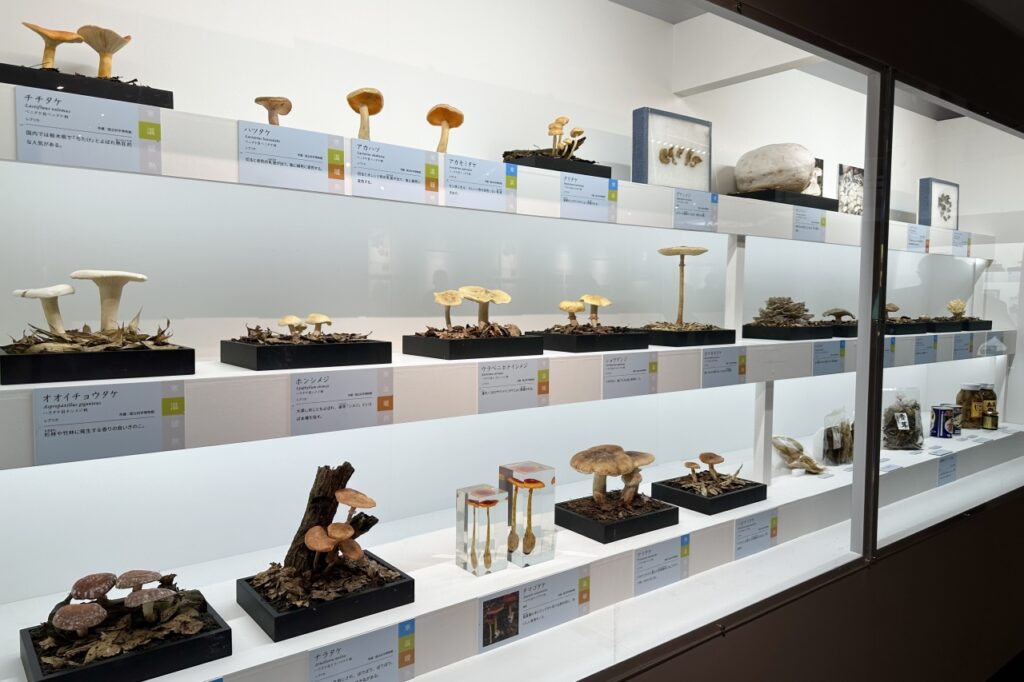
In the mushroom exhibition area, we focused on the fact that wild mushrooms such as truffles and boletus, which are considered luxury foodstuffs in Europe and America, are also distributed in Japan. These are produced in large quantities, and although it is hard to imagine that the Japanese of ancient times did not know of their existence, they were not used as ingredients in Japanese cuisine. On the other hand, slimy mushrooms such as nameko and enokitake, which Japanese people prefer, tend to be disliked in Western countries.
It is interesting to see the extreme difference between mushrooms that occur in the same way, being prized on the one hand and ignored on the other. In this way, the exhibition featured many attempts to illuminate the image of “Japanese food'' from a perspective that extends to the rest of the world.
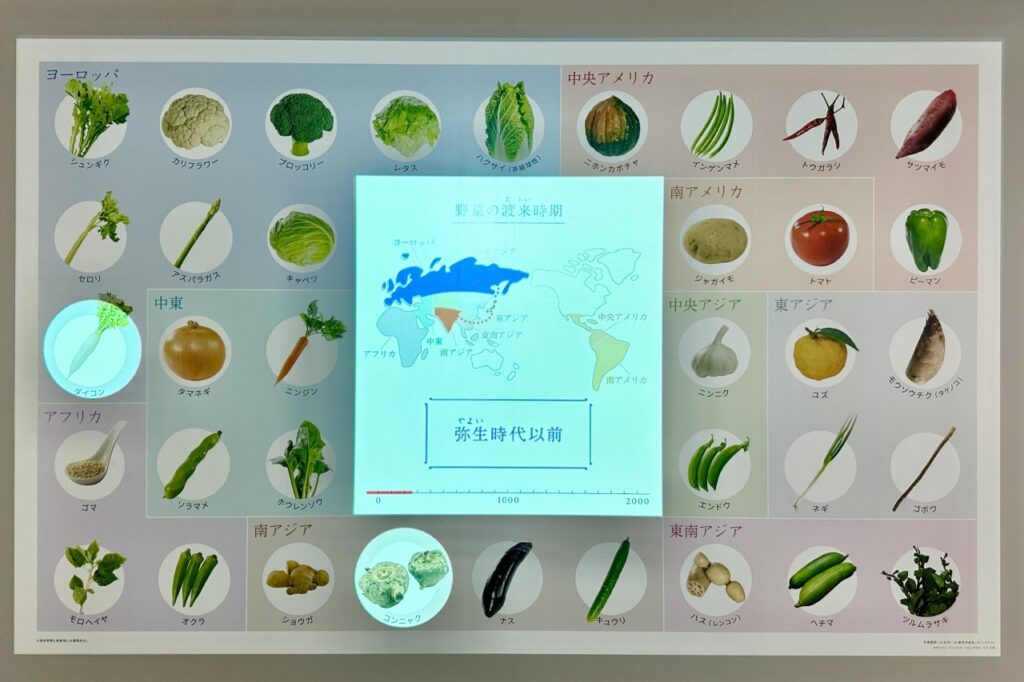

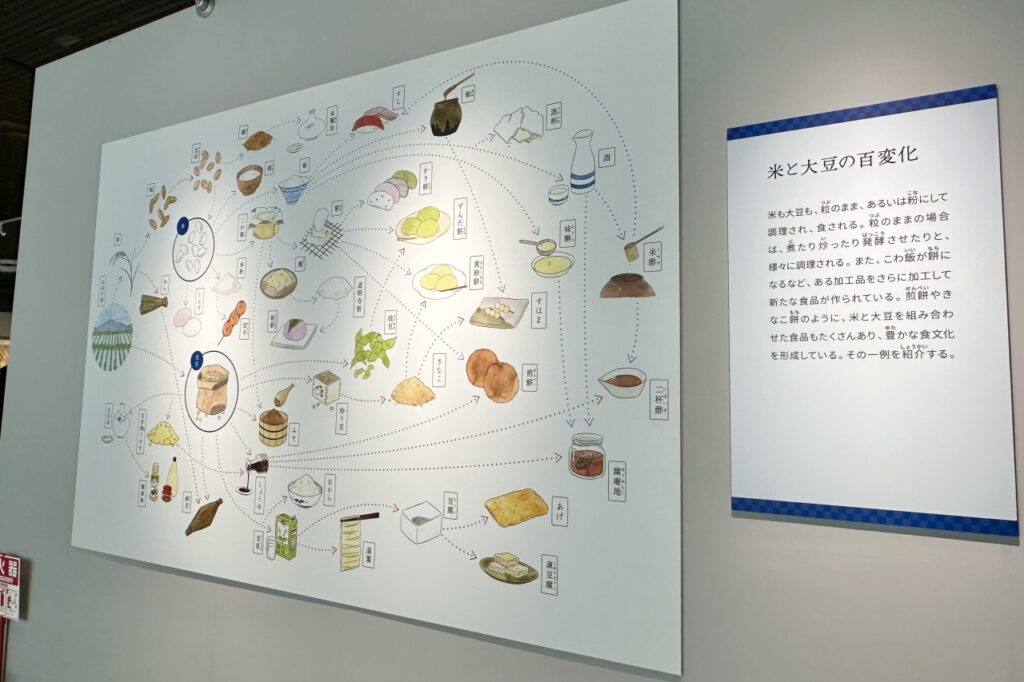
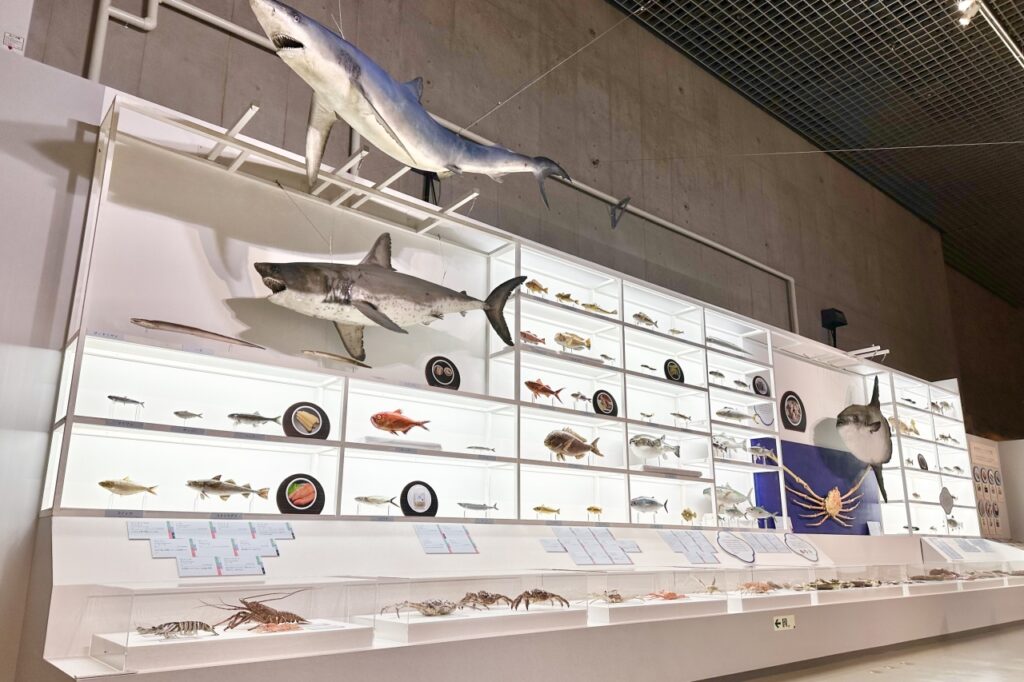
Seafood is a protein source often used in Japanese cuisine. The variety of seafood eaten in Japan is said to be one of the best in the world.The Japanese archipelago is surrounded by a variety of water environments, from the Sea of Okhotsk covered in drift ice to the Ryukyu Islands with mangrove forests and coral reefs.There are approximately 4,700 types of fish alone in Japan. Are the types distributed?
In order to introduce the different migratory routes and habitats of each species, an interactive video exhibit has been prepared in the seafood exhibition area. By placing your hand over the shadows of the various seafood that appear in the seas around the Japanese archipelago each season, information about that seafood will be displayed, making it a fun way to learn.
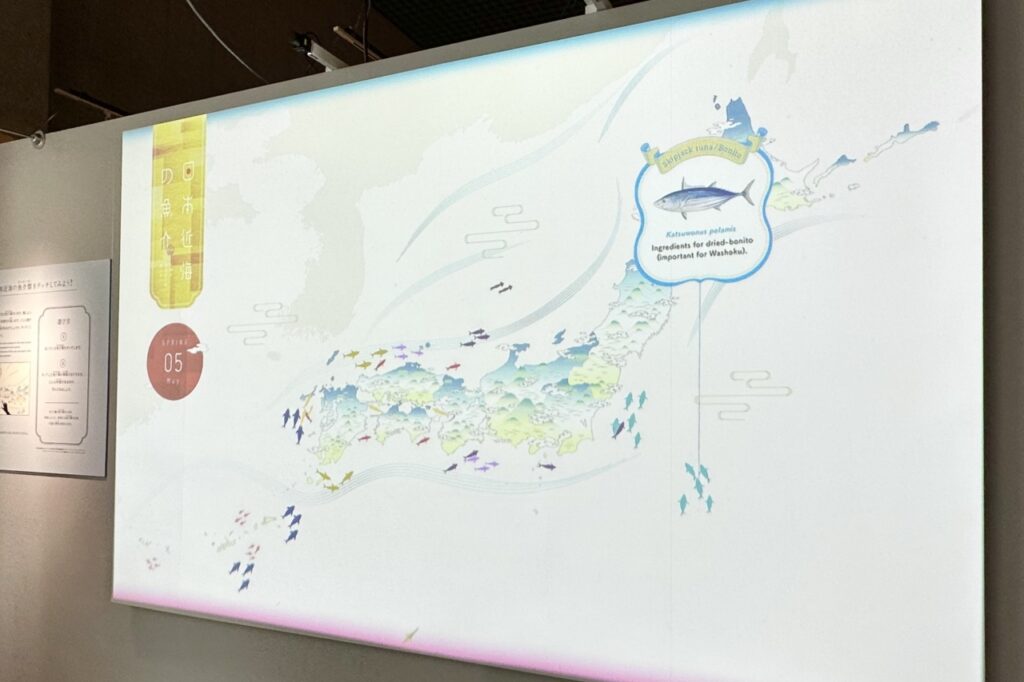
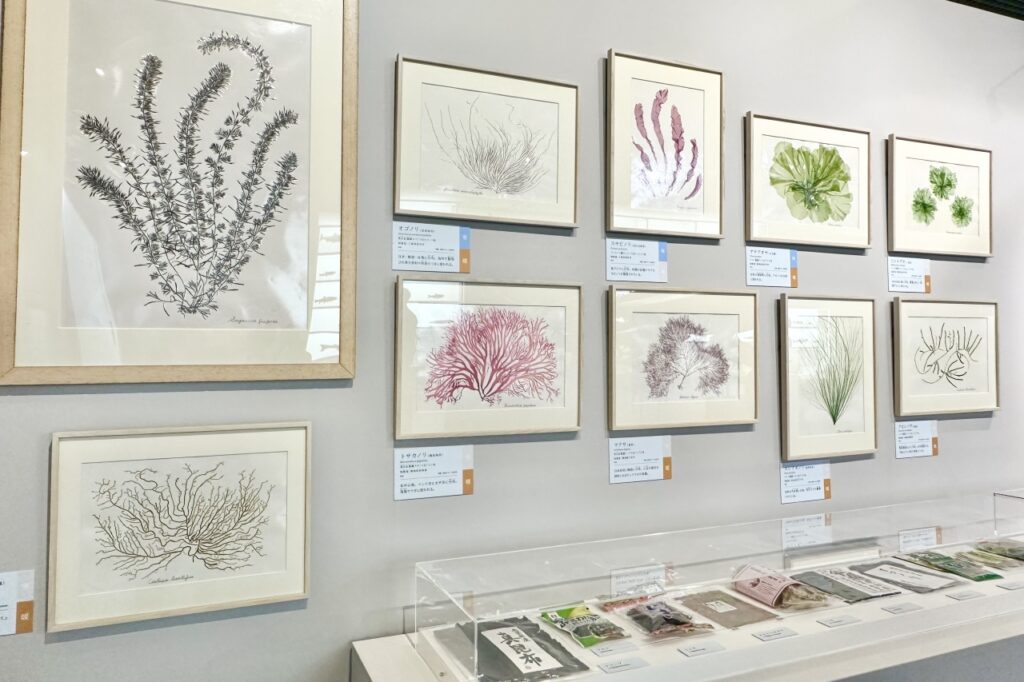
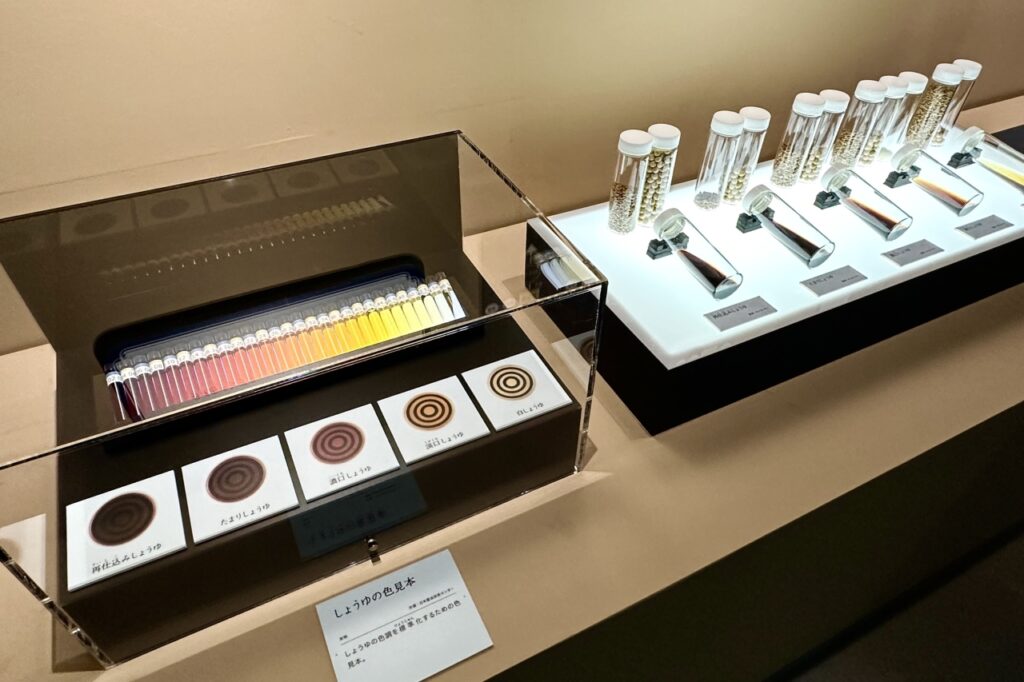
As a valuable exhibit, Dr. Kikunae Ikeda of Tokyo Imperial University, who is known for discovering and naming the deliciousness typified by dashi soup, “umami'', actually produced glutamic acid (“Umami''), an umami component extracted from kelp. No. 1 extract distilled tami acid") is mentioned.

Today, umami is globally accepted as “UMAMI''. Umami was discovered by Dr. Ikeda in 1908 as a fifth taste that is different from the long-known sweet, sour, salty, and bitter tastes. However, “dashi'' itself, which is made by extracting umami ingredients such as glutamic acid, inosinic acid, and guanylic acid from ingredients such as kelp and bonito flakes, has a much older history and has already appeared in literature from the Muromachi period. The umami flavor of dashi does not rely on animal fats and oils, but rather brings out the flavor of the ingredients, making it an essential part of Japanese cuisine, which tends to be bland and centered around soups and vegetables.
Additionally, when you taste the amino acid glutamic acid and the nucleic acid-based umami components inosinic acid and guanylic acid at the same time, there is a phenomenon called “umami synergy,'' in which the umami taste is significantly stronger than when they are consumed alone. This phenomenon was discovered in 1960, and the mechanism was only recently elucidated in 2008, but the combination of kelp (glutamic acid) and bonito flakes (inosinic acid) has become popular in Japanese cuisine. It is said that this was during the Edo period.
The dashi display gave us a glimpse of the insatiable inquisitive spirit of our ancestors, who, even though they didn't know the existence of umami, used it in their cooking from experience.
What did Himiko and Nobunaga eat? There is also a reproduction display of recipes from the Edo period.
There are many highlights in the second half of the venue, especially in Chapter 3, “The Origin of Japanese Cuisine,'' which unravels the history of Japanese cuisine from the Jomon period to the present day, and features historical figures such as Himiko, Oda Nobunaga, Admiral Perry, and Emperor Meiji. One of the highlights of this exhibition is the display that recreates the dining tables of famous people .

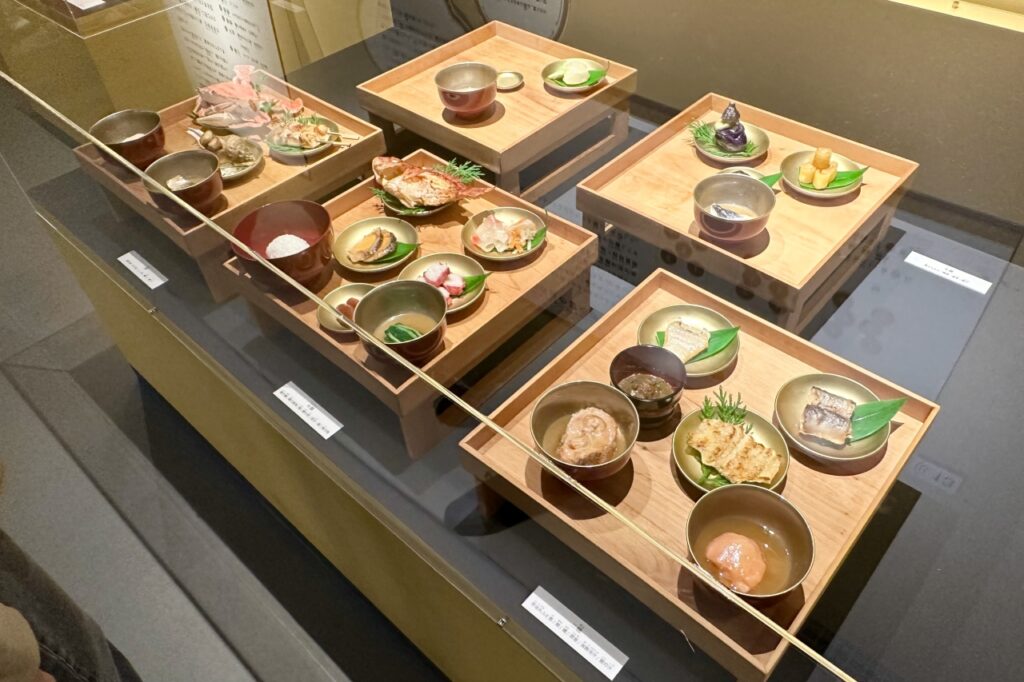
Since the Nara period, when the original form of Japanese cuisine centered around rice and fish was established, with meat consumption considered unclean and avoided, it has developed into various forms such as vegetarian cuisine, honzen cuisine, and kaiseki cuisine, but these are limited. It was something that could only be offered to people in certain places and positions. It wasn't until the Edo period that Japanese food culture made remarkable progress, and knowledge and techniques spread to the common people. Major factors behind this are said to be the development of restaurants, the factory production of fermented seasonings, and the spread of cookbooks due to the expansion of the literate population.
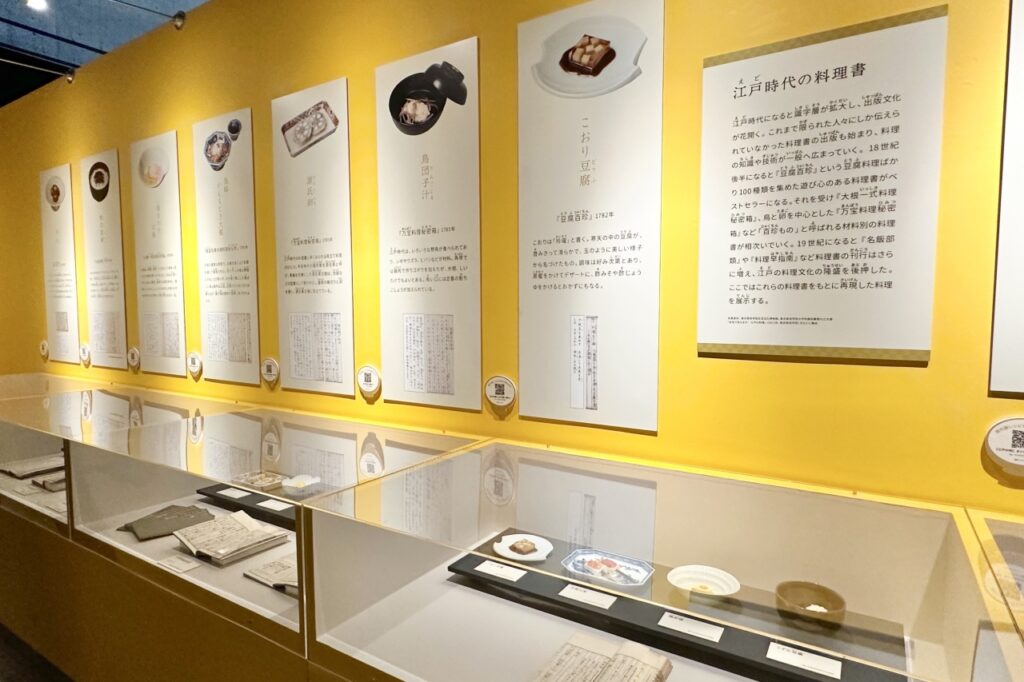
On display are the playful best-selling book “Tofu Hyakuchin'' (1782), which collects 100 types of tofu dishes, “The Secret Box of Radish Cooking,'' which was published as a result of that hit, and “Manpo,'' which focuses on chicken and eggs. See the original recipe books that contributed to the spread of Japanese food culture, such as the “Hyakurinmono'' cookbooks with different ingredients, as well as food samples of dishes made using the recipes introduced in the books. is completed. There was a QR code for a modern version of the recipe next to the exhibit, so it might be fun to try it at home.
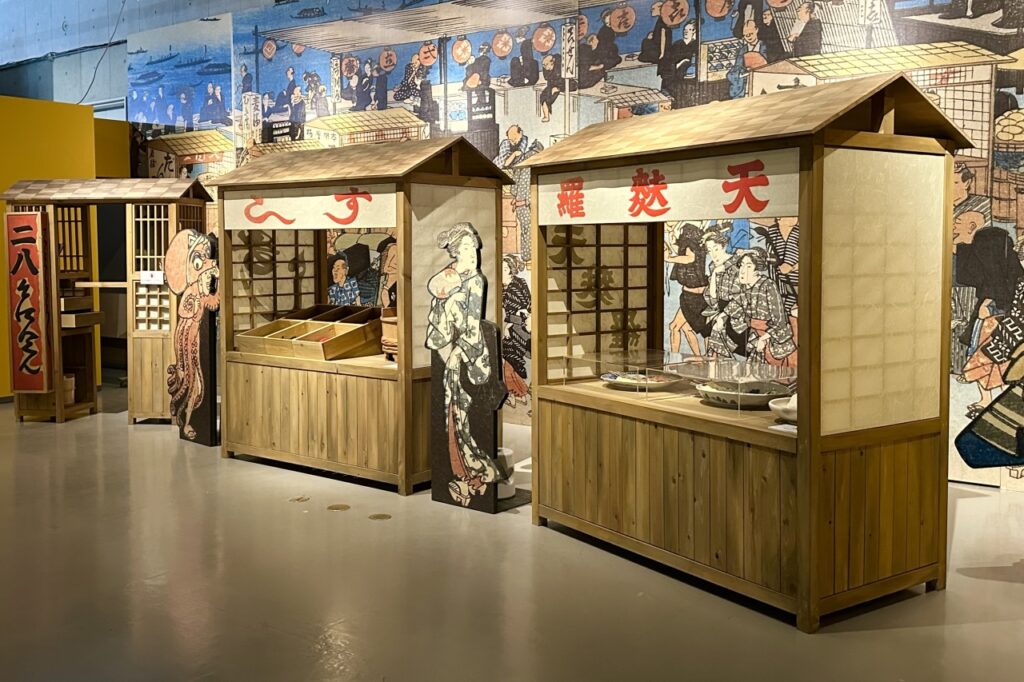

In the fourth chapter, “The Truth, Goodness, and Beauty of Japanese Cuisine ,'' the eye-pleasing video installation focuses on the things that make up Japanese cuisine, such as the vivid skills of chefs, the sophisticated shapes of cooking utensils, and the aesthetic sense of our ancestors. I'll give it to you.
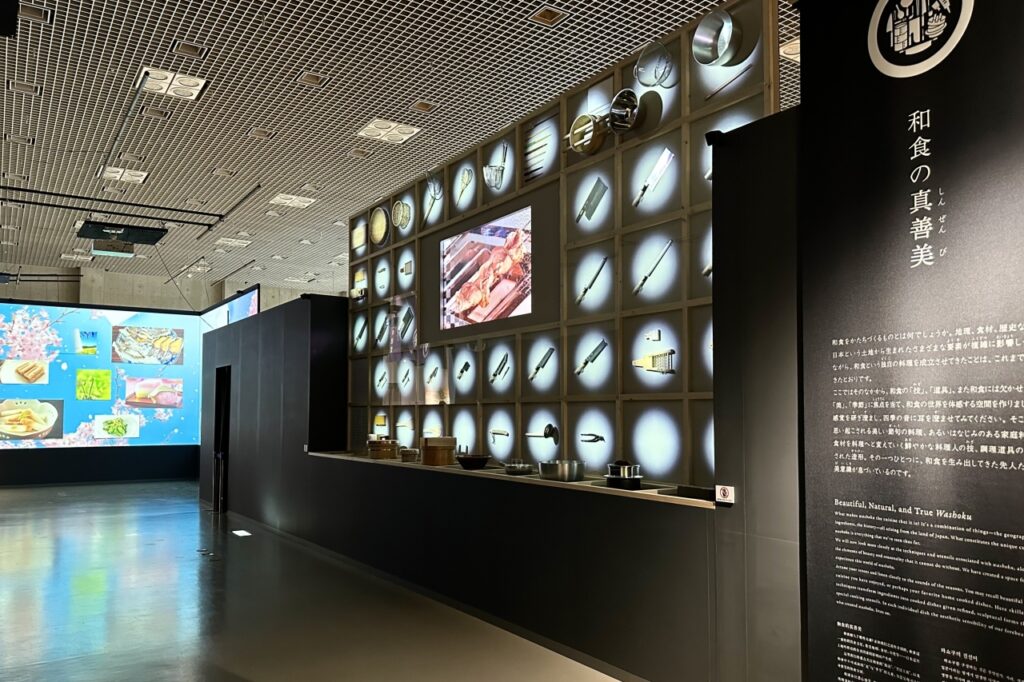
After the advent of civilization and enlightenment, with the introduction of Western and Chinese cuisine, the Japanese people began to refer to the food culture they had created as “washoku'' and became aware of this concept. Historically, Japan has successfully incorporated foreign ingredients to develop new cuisines, such as cooking methods that blend Japanese and Western styles, and Japanese-style Western and Chinese cuisine such as curry rice, Neapolitan spaghetti, pork cutlet, and ramen. This can be said to be a major feature of Japanese cuisine.
In Chapter 5, “My Japanese Cuisine,'' after understanding the process by which Japanese cuisine was created through the previous exhibits, the content is designed to make you reconsider what Japanese cuisine is, whose definition changes over time. I did.
Only Chapter 6, “The Future of Japanese Cuisine,'' is located in the second venue, and it talks about how Japanese cuisine will change in the future, points out the importance of local cuisine and traditional vegetables, and explains how Japanese cuisine continues to change in response to changes in society. Look to the future. In the area that introduces attempts to solve food problems and developing technology, we were able to see rare artificially hatched Japanese eel leptocephalus larvae.
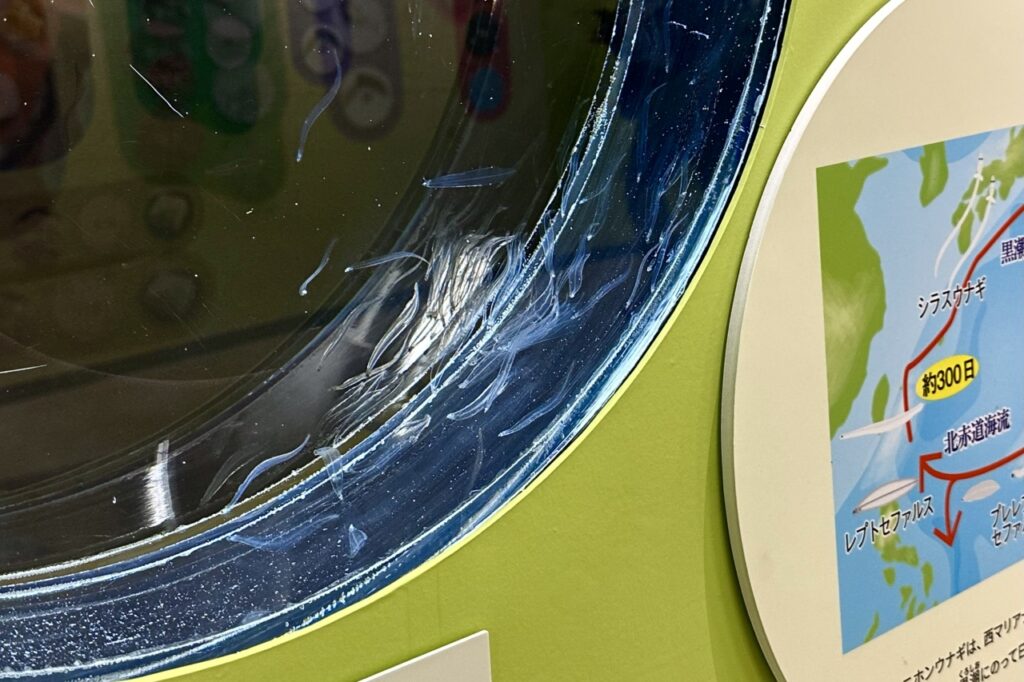
Nowadays, it is possible to order ingredients from all over the world regardless of the season, and recipes from any country can be easily obtained through the internet. You can experience the same food and the same taste anytime and anywhere…With the expansion of homogeneous food-related services, the diversity and uniqueness of Japanese food culture may be fading away. However, there are certain ingredients and tastes that are rooted in the local area, and if we think about the wisdom and tenacity that went into changing Western food to fit within the Japanese style and context of rice and miso soup, we can't help but think about the future. I felt that there was hope for the development of
If you deepen your understanding of the diverse natural environment and people's activities of the Japanese archipelago through this exhibition, you may find that your daily Japanese food tastes even better.
The exhibition period is until February 25, 2024 (Sunday). Please come and visit us.
Overview of the special exhibition “Japanese Cuisine: Japanese Nature and People’s Wisdom”
| Period | Saturday, October 28, 2023 – Sunday, February 25, 2024 *Show dates are subject to change. |
| venue | National Museum of Nature and Science (Ueno Park, Tokyo) |
| Opening hours | 9:00-17:00 (Admission until 16:30) |
| closing day | Mondays, New Year holidays (December 28th – January 1st), January 9th (Tuesday), February 13th (Tuesday) *However, it will be open on December 25th (Monday), January 8th (Monday, holiday), February 12th (Monday, holiday), and February 19th (Monday). |
| Admission fee (tax included) | General/students 2,000 yen, elementary/junior high school/high school students 600 yen *Preschool children are free. *Free admission for persons with a disability certificate and one caregiver. For other details, please check the ticket page of the official website ( https://washoku2023.exhibit.jp/ticket.html ). |
| inquiry | 050-5541-8600 (Hello Dial) |
| Exhibition official website | https://washoku2023.exhibit.jp/ |
| Sponsored by | National Museum of Nature and Science, Asahi Shimbun |
*The content of the article is as of the interview date (October 27, 2023). Please check the exhibition official website for the latest information.


